Led Zeppelin’s demon manager: the best – and worst – of Richard Cole
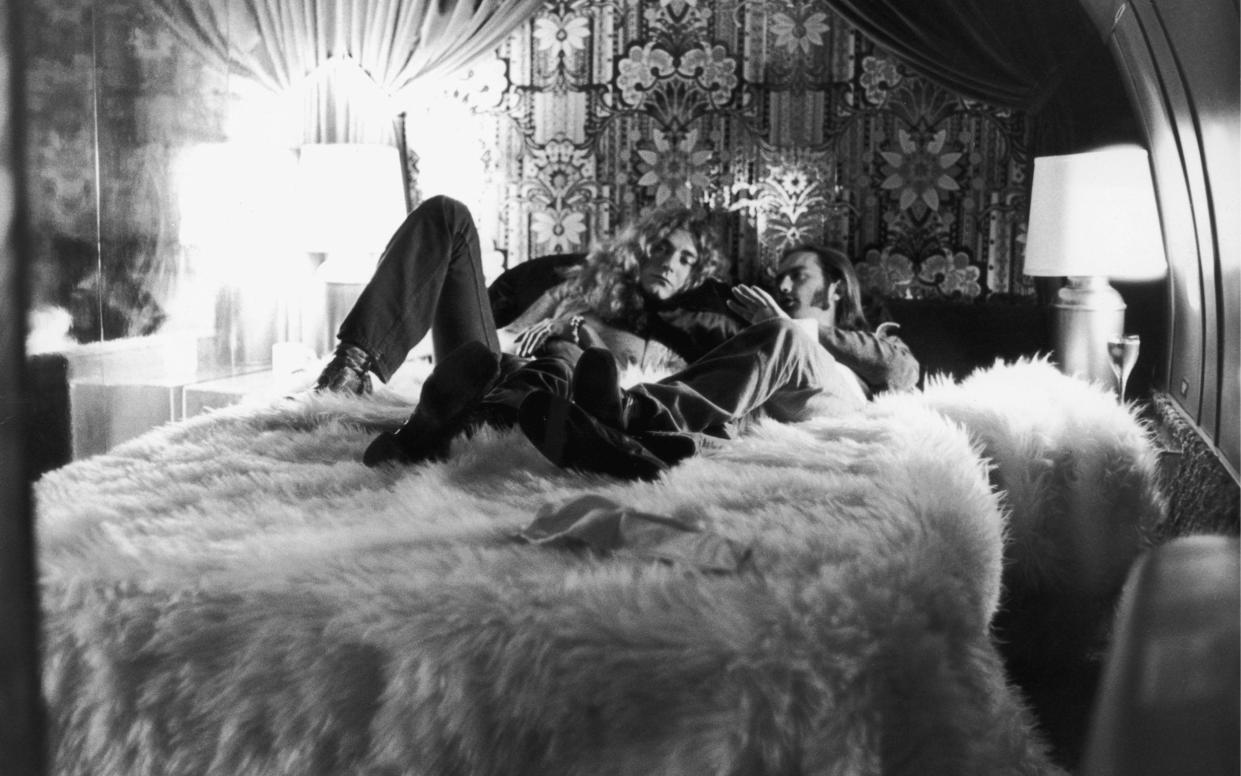
- Oops!Something went wrong.Please try again later.
- Oops!Something went wrong.Please try again later.
- Oops!Something went wrong.Please try again later.
- Oops!Something went wrong.Please try again later.
Led Zeppelin’s long-time tour manager Richard Cole died on December 2, aged 75. Cole, who worked with the rock band between 1968 and 1980, was a loyal, hard-working, hard partying hellraiser who was at the band’s side throughout their glory years.
Just like the band’s manager Peter Grant, Cole was loud, physically imposing and tough. “There are few characters in the Led Zeppelin story as colourful as Richard Cole,” writes Bob Spitz in his new book Led Zeppelin: The Biography. Drawing largely from Spitz’s book, James Hall recounts the most notorious Cole anecdotes, good and bad.
The day he almost killed Led Zeppelin
Londoner Cole was known for going above and beyond for the members of Zeppelin. On an early US tour in January 1969, the band were stuck in the Pacific Northwest due to a wild blizzard but needed to get to Los Angeles for a show. Undeterred, Cole bundled the band in the back of a Ford LTD and defied a travel ban that had shut the Interstate 90. He drove past a police roadblock and careered down the icy, empty highway.
At one point, Cole stopped the car as he needed a pee. He applied the car’s brake but, unbeknownst to him as stood by the roadside, the vehicle started rolling backwards towards a precipice behind him. Led Zeppelin were seconds from becoming Dead Zeppelin. Cole heard the band’s screams, rushed back and managed to stop the car. “The band was so rattled, they could barely pass around the bottle of whiskey intended to calm their nerves,” Spitz writes.
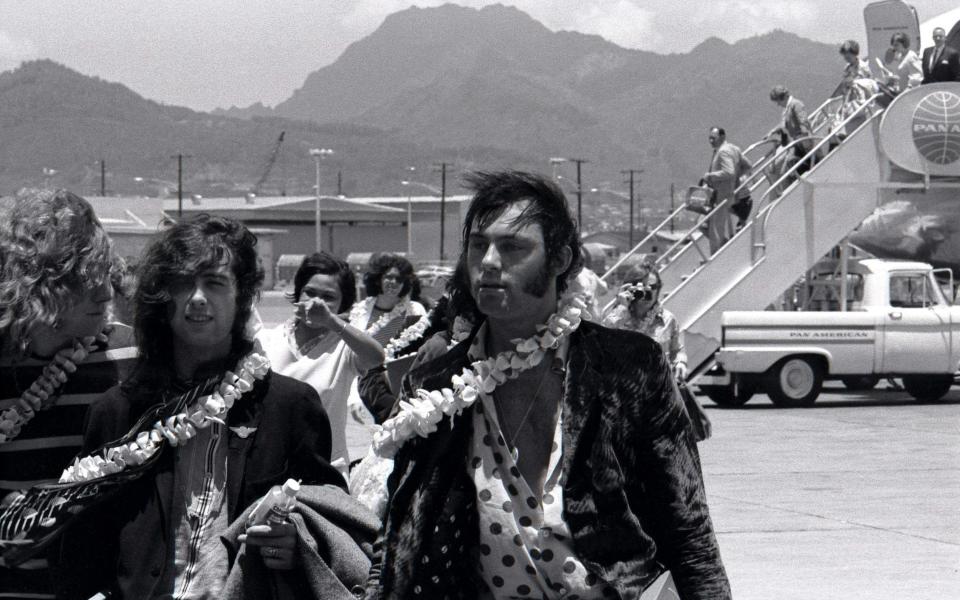
The mystery of the missing cash
Cole was caught up in one of the greatest mysteries surrounding Led Zeppelin: the infamous July 1973 cash robbery at the Drake Hotel in New York. The band were wrapping up their US tour with a trio of shows at Madison Square Garden when word arrived backstage that $200,000 in cash (£950,000 in today’s money) had gone missing from the band’s safety deposit box in the hotel. The Drake became a crime scene involving the New York City police and the FBI.
According to Spitz, Cole was the prime suspect as he had the only key to the box. The authorities suspected it was an inside job: Cole was interrogated, fingerprinted and later told people that he’d taken and passed a lie detector test. The crime is still unsolved.
But with a tax rate of 90 per cent in Britain, it seems plausible that Zeppelin’s manager Peter Grant arranged for the cash to go missing – with Cole’s help – to avoid a whopping post-tour tax bill. Indeed, Spitz writes that five sources close to the band told him that Grant had admitted spiriting the Drake money away. Actor and singer Michael Des Barres told Spitz, “Peter told me that Richard did it. It was a tax thing. He said, ‘Why would you let all that money go to these other c––––?’”
Mystery solved? The new book suggests so.
The John Bonham bromance…
Cole and Zeppelin drummer John Bonham were particularly close. Both had prodigious appetites for drink and drugs, and both would egg each other on on the road. Once, in Los Angeles, Cole bought Bonham a new Honda motorbike, and the two tore around the eleventh floor of the Hyatt House hotel (nicknamed the Riot House, somewhat predictably). They once pelted Kojak actor Telly Savalas with food and cutlery on a first-class transatlantic flight.
In the autumn of 1973, while staying at the Osaka Hilton, Cole and Bonham got hold of a pair of samurai swords and had a full-on fight. They “slashed and destroyed” everything in their suite, says Spitz, adding that it was a miracle neither got injured. After the fight, they stumbled across bass player John Paul Jones asleep in a traditional tatami mat.
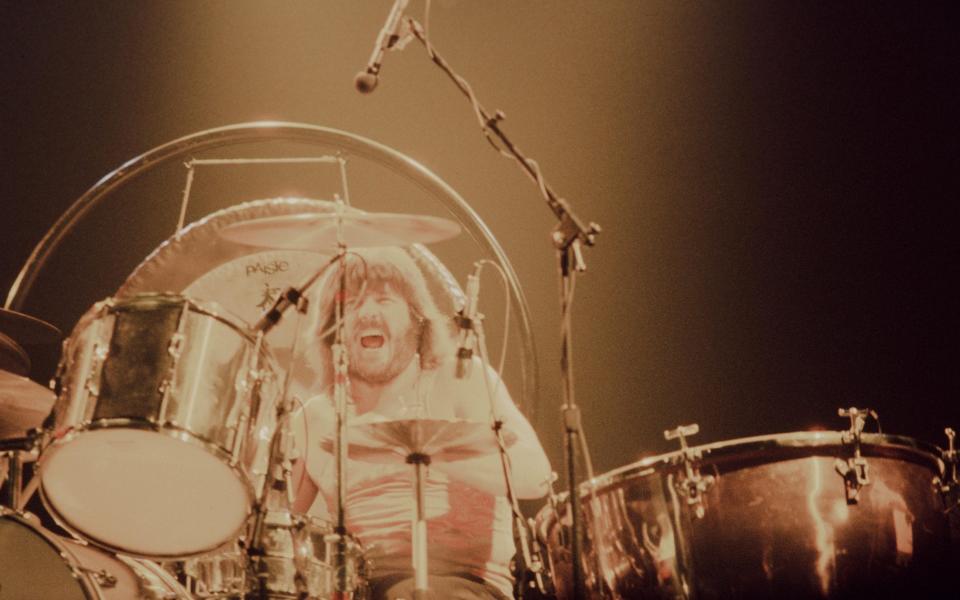
Cole and Bonham quietly picked the mat up and put it in an elevator, where it – and the slumbering Jones – travelled up and down all night long. Japanese guests were too polite to wake Jones so, instead, the hotel management put a screen around him and let him kip. Led Zeppelin were barred from ever staying at the hotel again.
…that could turn dark
But Cole and Bonham’s high jinks could turn dark and violent, even between themselves. One night at the Riot House they dangled a friend of DJ Rodney Bingenheimer’s upside down over an 11th floor balcony. And when Bonham punched Robert Plant one night in Dublin and then picked a fight with a hotel chef, Cole knew that a line had been crossed. As the chef lunged at Bonham with a carving knife, Cole leapt forward and punched the drummer, breaking his nose. Cole said his intervention was for Bonham’s own safety.
There were also stories, possibly apocryphal, that Cole and Bonham tried and failed to encourage a Great Dane dog into a sexual encounter with a groupie somewhere in Los Angeles, possibly at the Chateau Marmont. “I have never seen anyone behave worse in my life than Bonham and Cole,” said journalist Nick Kent, quoted in Spitz’s book. This is quite an admission from a man who was briefly guitar player in the Sex Pistols. “I once saw them beat a guy senseless for no reason and then drop money on his face,” Kent added.
The dash to save Robert Plant’s life
Cole’s dedication to Led Zeppelin and general resourcefulness were summed up by his actions following a car accident involving Robert Plant and his family in Rhodes in 1975. Plant, his wife Maureen and their two children were injured when their hire car skidded off a road and crashed into a tree. Maureen was particularly badly hurt and in need of emergency blood transfusions.
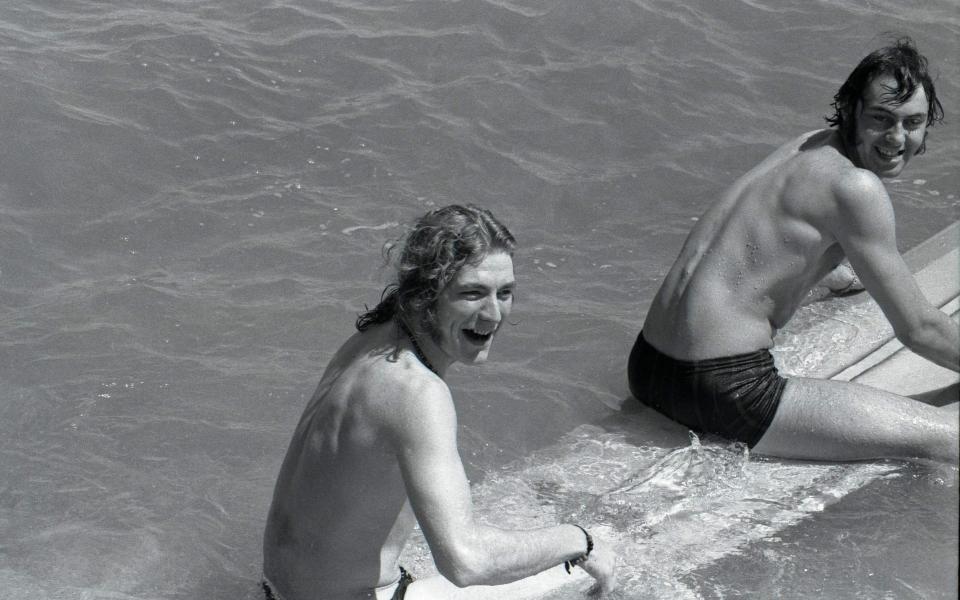
Cole was woken by the news in London. He persuaded two doctors – a British physician who worked for the Greek embassy and an orthopaedic surgeon – to fly to Rhodes immediately and arranged a private jet for them. He also found eight pints of Maureen’s rare blood type and stashed them in the plane’s fridge.
When the family was subsequently told by Greek authorities that they couldn’t leave the country as the accident was being investigated, Cole hired a private ambulance and two cars and snuck the family out of the hospital at 2am, their IV bottles still attached. They flew to back London on a private jet, and Cole arranged for ambulances to meet them at Heathrow to take them to Guy’s Hospital. It was, says Spitz, “a great escape that would have impressed Steve McQueen.”
The shark incident
One of the most sickening and notorious stories about twisted "rock ‘n’ roll" behaviour involved Cole. The infamous shark incident of July 1969 has only become more – rather than less – shocking as the decades have passed. It’s not for the faint-hearted.
The incident is said to have occurred in the Edgewater Inn hotel in Seattle, after the band had played at the Seattle Pop Festival. The hotel, as the name suggests, sits on a pier on the edge of Elliott Bay, and guests in waterfront rooms were offered fishing rods in order to fish from their balconies. The band were on a day off when a 17-year-old groupie called Jackie arrived to see if a party was in progress. As she arrived Cole and the road manager from the band Vanilla Fudge, a man called Bruce Wayne who was – of course – known as Batman, were landing a haul of red snappers and mud sharks on their balcony. They were drunk on champagne.
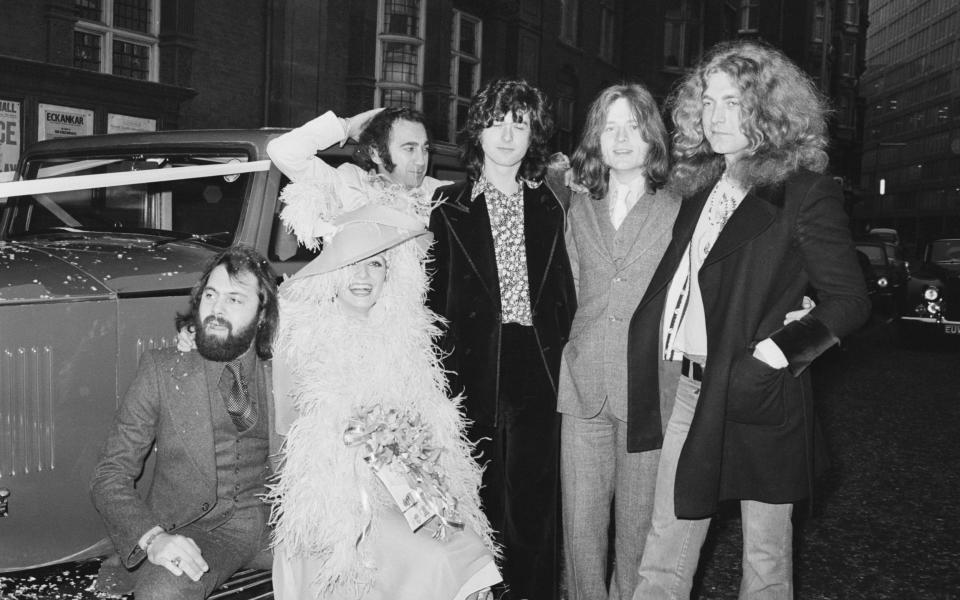
A party started in one of the Zeppelin rooms, and Jackie was asked to remove her clothes, writes Spitz. Cole and Batman started “hitting her with the fish”, according to an account given to Spitz by Carmine Appice, the Vanilla Fudge drummer, who was there. The dead fish left teeth marks on Jackie’s back. Things reportedly descended from there.
The grim scene is thought to have been filmed. The lurid incident, and the assertion by all concerned that Jackie was a willing willing participant, tells you all you need to know about male dominance in the music industry at the time.
Enter The Starship
When touring in the US in the early Seventies, Led Zeppelin flew between gigs in a private nine-seat Fan Jet Falcon. However by 1973, when the band were at the height of their popularity, they deemed the Falcon too cramped for their ever-growing entourage. Further, it was a nightmare in turbulence. They needed something bigger. Cole had heard about a forty-seater Boeing 720B that had been kitted out for rock bands.
It came complete with a 30-foot sofa, an artificial fireplace and a bar with a built-in electronic organ. So Zeppelin’s management hired it for $10,000 a week (£50,000 today). It was known as The Starship. According to Spitz, Cole stocked the hold with Jack Daniels, Singha beer and “several cases of vintage Dom Pérignon”. The menu included steak, shrimp and caviar. The band also used The Starship on their 1975 US tour. Other acts that hired it included Elton John, The Rolling Stones and Bob Dylan. The plane was dismantled for parts in 1982.
Good tour manager, bad businessman
Richard Cole was unquestionably an excellent tour manager. “No one was better at wrangling musicians on the road or maintaining order when things got hairy,” writes Spitz. However he was not a great businessman.
In February 1976, Peter Grant was due to fly to Los Angeles for a day-long meeting with Warner Bros executives, including the future music mogul David Geffen, to talk about the upcoming Led Zep film The Song Remains The Same. However Grant couldn’t make the trip, so he sent Cole and associate Benji Le Fevre instead. It didn’t go well.
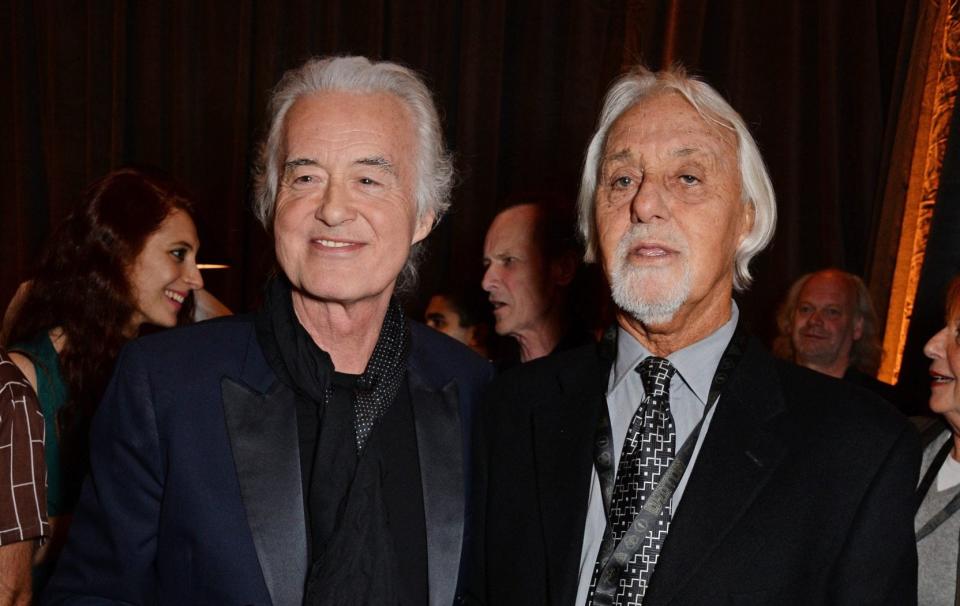
Warner Bros president Frank Wells was furious when Cole and Le Fevre arrived. Cole was said to be high and drunk. “No one was amused by his foul mouth and litany of uninformed suggestions on how Warner Bros should handle the release,” writes Spitz. Were it not for Zeppelin’s stature and financial clout, the deal might have been pulled, he writes.
The mad 'bomber'
By the summer of 1980, Cole’s drug habit was out of control and he’d been dismissed by Grant and the band. He was no longer part of the Zeppelin touring machine that had been central to his life for over two decades. Cole headed to Italy to clean himself up and kick the drugs. However the day after he arrived at the Excelsior Hotel in Rome, he was arrested by a SWAT team on suspicion of terrorism due to a bomb that had exploded at Bologna train station. Cole had been set up by Herb Atkin, a shady Zeppelin associate with a grudge.
But Cole also had a bag of cocaine on him. He went to Rome’s notorious Rebibbia prison. While the bogus terrorism charges were dropped, a drug dealing charge stuck. He remained in prison for six long months, only being released with the help of a New York lawyer called Jeff Hoffman, who was also the lead counsel for mob boss John Gotti.
One thing is for sure. The music scene will never see the like of Richard Cole again.
Led Zeppelin: The Biography by Bob Spitz is published by Penguin Press

